Remakes, Remasters and Next-Gen Upgrades (How Revived Games Thrive)
When Bluepoint Games was remaking Shadow of the Colossus (2005) for the PS4, they noticed a pattern about the birds in the central temple complex of the game. In Shadow, the protagonist Wander sets out from this temple to kill various giants, and is returned to the temple once his mission is complete. Bluepoint developers noticed that if Wander was heading out for his fourth giant, or Colossus, then four birds would be perched in the temple; if he was heading out for his 10th, then ten birds would appear.
This detail had escaped Bluepoint’s notice when they were remastering the game for the PS3, and in any case, since a remaster mostly uses the original code, the pattern would have been reproduced automatically. But in a remake, which requires developers to recreate a game, pretty much from scratch, all these little touches have to be remade as well, and Bluepoint took great pains to ensure that the bird-and-colossus pattern, and various other details, made it to the remake.
The result was a ‘precedent-setting’ game that not only introduced Shadow to a whole new generation of gamers, but also preserved and recaptured the experience of playing the ground-breaking original. Bluepoint’s remake has received widespread critical acclaim, with some claiming that the new Shadow is one of the best remakes of all time. The original Shadow of the Colossus is often cited as an example of how video games can be art, and Bluepoint’s painstaking reconstruction does justice to the game, its fans and its legacy.
In this blog, we will discuss remakes, remasters and next-gen upgrades, all of which give old games a new lease of life on upgraded consoles and modern PC hardware. We will see how prominent remakes faithfully retain the unique features of the originals, how remasters greatly enhance the graphics of an older game for new hardware, and how the next-gen upgrade endows a game with improved graphical fidelity and performance on a new generation of consoles.
Remakes and remasters are compelling business propositions today, especially because the gamers who played the original versions of classic games are older now and have more disposable income. Remakes and remasters are big money makers – digital revenue for prominent remakes nearly doubled between 2018 and 2020, and remake earnings surged in 2020 amidst widespread pandemic lockdowns. Moreover, remakes and remasters allow younger gamers to experience ground-breaking classics with all the graphical fidelity and streamlined gameplay of modern hardware.
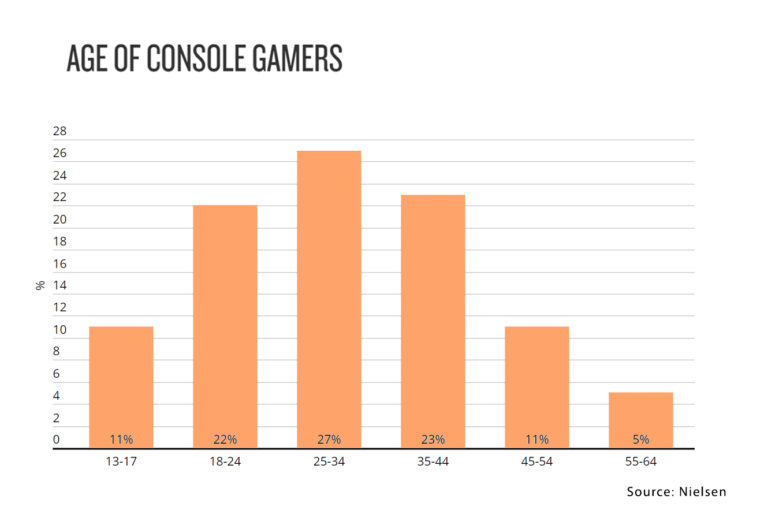
In fact, in 2020, a remaster – The Legend of Zelda: Skyward Sword HD – was more anticipated than many new titles, and it was also the best-selling game in the US at launch, during July 2021. Remakes of Resident Evil 2 (2019) and 3 (2020) had bigger launches than the new entry in the franchise, Resident Evil 7 (2017). One observer calls the new trend of remasters and remakes a ‘nostalgia gold rush’, underscoring how a longing for the past plays a crucial role in driving the success of a remake or a remaster.
In the following sections, we will discuss what remakes, remasters and next-gen upgrades are, and why they are made.
How are Games Revived for New Generations?
The development of remakes, remasters and next-gen upgrades are all endeavours that revive an older game for new hardware and modern consoles. But what, exactly, do these terms mean, and why do studios and developers undertake remakes and remastering projects? We discuss both in the sections below.
What is a Video Game Remake?
A video game remake is a ground-up recreation of a classic game. It includes high-quality models, textures, animations and sounds, and is powered by a modern game engine that brings state-of-the-art lighting, reflections, shadows and other effects.
Examples include Capcom’s Resident Evil 2 remake, released nearly 21 years after the original, and the Final Fantasy VII remake (2020). Both games were originally released on Sony’s first PlayStation console.
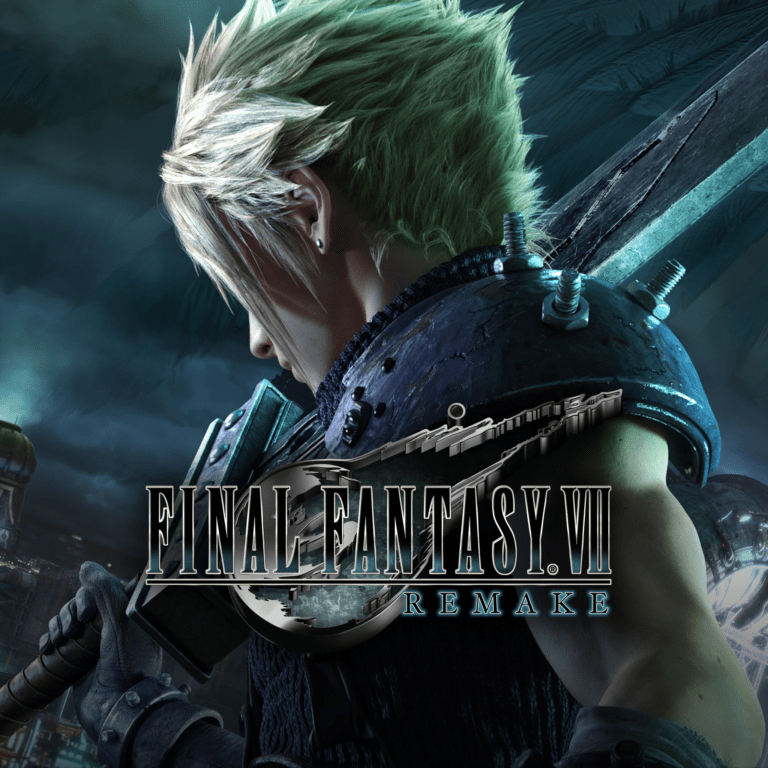
What is a Video Game Remaster?
A video game remaster is essentially a much better-looking version of an older game. Taking advantage of modern hardware, a remaster adds a whole range of visual effects that were either unavailable to the original, or hard to implement without performance costs, and also upgrade the game’s textures, models and animations. In general, remasters use much of the same code as the original, but can update it so that the game runs at higher resolutions and frame rates on new hardware. Many remasters are bundled into a single collection as well, and remasters of a single game can include all the DLC in a single edition.
There are numerous examples of remasters, across video game generations, including the Shadow of the Colossus remaster (2011) for the PS3, the Last of Us Remastered (2014) for the PS4, and the Master Chief Collection (MCC) for PC and the Xbox One consoles. The MCC continues to receive updates long after its initial release in 2014.
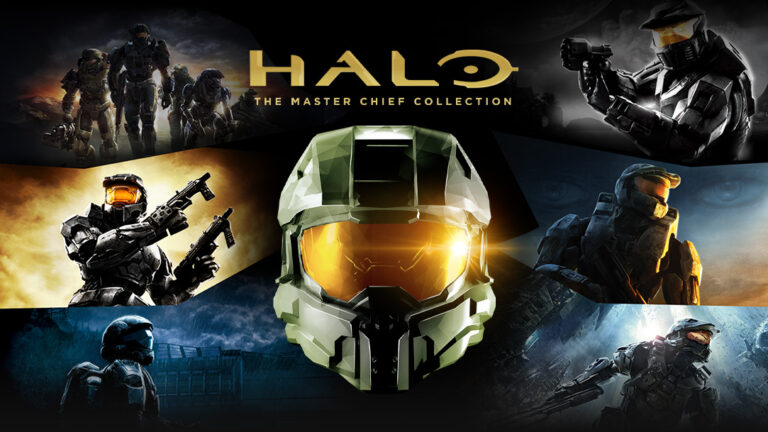
What is a Next-Gen Upgrade?
A next-gen patch updates a game to match the quality of titles released for the latest hardware. They are usually meant for recent games – older games would need a remaster. Even a bare-bones next-gen upgrade will usually boost frame rates and performance and enable higher resolutions. Some developers may also provide high-res texture packs and greatly upgrade game graphics with features such as ray-tracing, support for upscaling algorithms and HDR rendering. Many games receive such upgrades for current-gen consoles.
Developers may also update remasters or remakes with next-gen features: examples include Resident Evil 2, a remake which received a ray-tracing patch on console and PC, and Crysis Remastered, which was updated to support NVIDIA’s Deep Learning Super Sampling (DLSS), an AI-based upscaling technique
Why are Video Games Remastered and Remade?
Remasters and remakes are not made purely for financial reasons, though such considerations may play a significant role in determining what game is to be remastered or remade. Good remakes and remasters evoke nostalgia, build excitement for new releases in the franchise and help developers improve their skills and industry cred.
Furthering a Game’s Legacy and Evoking Nostalgia
One of the key reasons for remastering or remaking a game is to evoke nostalgia among the many fans it garnered when the original was released. Remasters and remakes allow fans to revisit cherished virtual spaces while enjoying all the convenience and graphical fidelity of modern hardware. Such updated games can also attract entirely new audiences looking to discover why these titles became classics.
Off-Setting the Risks of AAA Development
According to an NPD analyst, publishers can pursue the remastering trend to make money through lower-risk ventures. Remasters may sell less than a new game, but cost much less to make, and publishers can also decide which games to remaster, knowing where the demand exists. In fact, Nintendo’s Super Mario 3D All-Stars, a compilation of older Super Mario games, was sold with a sixty-dollar price tag and became the second best-selling Switch title of 2020, despite the fact that the collection was a time-limited release. An avid fan base looking to relive their beloved franchise had created a natural and profitable market for the Switch release, and saved Nintendo the millions of dollars involved in making a new game from scratch.
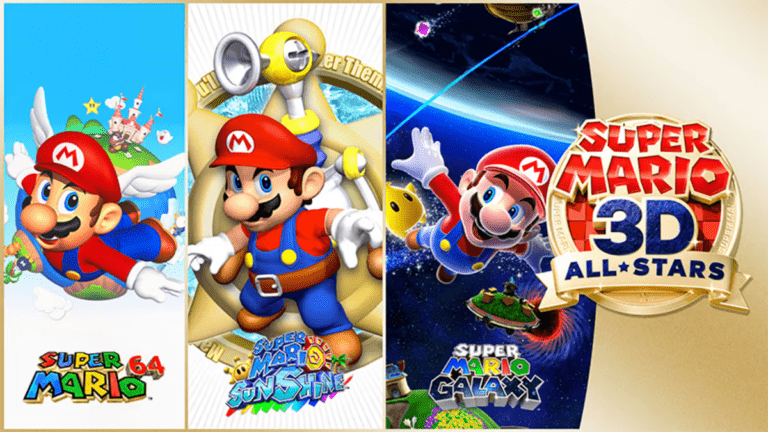
Creating Excitement for New Releases
Microsoft successfully built hype around Halo 5: Guardians (2015) by releasing the Master Chief Collection for Xbox One right before it. The MCC allowed many new gamers to experience the franchise’s history before they dived into Halo 5. Despite a troubled launch, the Master Chief Collection is now a well-regarded remaster and arguably the best way to experience the early adventures of John 117.
The Crash Bandicoot N. Sane Trilogy (2017), a collection of remastered Crash Bandicoot games was a resounding success, and a remake of the PS1 game, Crash Team Racing Nitro-Fueled (2019) followed soon after. For long, Crash Bandicoot had been a mascot for Sony, but the franchise had stagnated until the remaster and remake revived it. In 2020, Crash Bandicoot 4: It’s About Time marked the first new release in the franchise in 12 years and proved a commercial and critical success.

Building a Developer’s Reputation and Capabilities
When Grim Fandango (1998) was remastered and released for multiple platforms in 2015 by Tim Schafer’s Double Fine Productions, it was praised by fans and critics and sold far more units than the original. Double Fine built brand loyalty so well with its Grim Fandango remaster that its Kickstarter project ‘Double-Fine Adventure’ broke records in 2012, raising one million dollars within 24 hours.

Bluepoint Games has a splendid reputation thanks to its critically-acclaimed remasters of games in the God of War and Uncharted franchises, and its marvellous remakes of Shadow of the Colossus and Demon’s Souls (2020). Its remake of FromSoftware’s first ‘Souls-like’ game was a launch title for the PS5 and Bluepoint has been purchased by Sony. It now has the chance to make a first-party PlayStation game, and all its experience remaking and remastering Sony hits will no doubt help.
In the following sections, we will discuss just what it takes to remake, remaster or upgrade a game – each endeavour has its own challenges, and we delve into them below.
The Video Game Remake - a Labour of Love
Remaking a video game from scratch is a major undertaking, given that the game being remade was released generations ago. The resulting remake must nevertheless capture the feel of the original faithfully, while updating the content to modern gameplay and graphics standards. As such, developers must have one eye on the past and one to the future, and strive to recreate every little detail in the original, and even keep the gameplay elements and mechanics intact while updating them to match modern controller setups.
Prominent titles include Bluepoint’s great Shadow of the Colossus (SOTC) remake for the PS4 released in 2018, Capcom’s remakes of Resident Evil 2 and 3, and Square Enix’s Final Fantasy VII Remake. SOTC’s remake was released 13 years after the original, the RE 2 remake nearly two decades after the original, and the FF7 remake was released 23 years after the original – the original games are so old they necessitated a full remake.
This is why remakes are recreated on modern game engines, and not much of the original code makes it to the remake. Many of the environments, models and textures have to be made from scratch. Combat elements may need to be overhauled, as is the case with the Final Fantasy VII remake – the original had turn-based combat while the remake features a revamped real-time combat system and allows you to switch between the main player character and his companions to execute special moves. The end result recreates the flow of battle in the original, while introducing innovative gameplay mechanics.
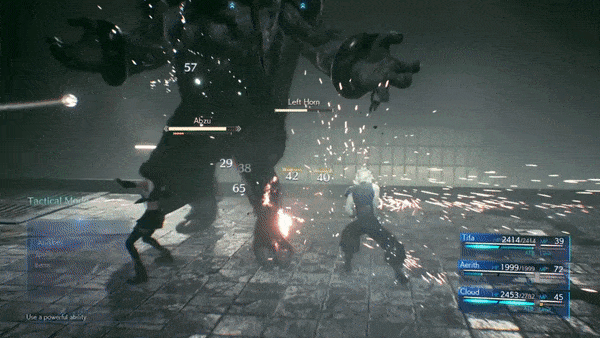
Bluepoint Games has justly earned the moniker ‘masters of the remaster’ because of their work on various critically acclaimed remasters and remakes, and their Shadow of the Colossus has been hailed as one of the best remakes ever – a closer look can tell us just what it takes to create a great remake of a beloved game.
Shadow of the Colossus is a minimalist classic made by game creator Fumito Ueda for the PS2. In the game, the hero Wander explores desolate landscapes in search of mighty ‘Colossi’, whom he must kill in order to bring his lover back from death. The game’s areas offer no treasures, there are no low-level enemies to combat, no NPCs and no cities, towns or villages. Wander has only a sword and a bow with arrows to kill each Colossus, and rides a horse that doesn’t always respect his commands. The game is essentially sixteen boss battles, each of which is unique and takes place in its own desolate world, made all the more memorable because Ueda shuns so many traditional gameplay tropes. SOTC was an instant classic and A New Yorker article discusses the game’s status as a work of art. Remaking a game with such a formidable reputation was, well, a colossal challenge.
For its PS4 remake, Bluepoint started with the updated code base from their PS3 remaster of the game, and used Ueda’s later title, The Last Guardian (2016) as a guideline for how the visuals should be updated. To recreate the forested and grassy areas of the original, they devised a foliage system, in which grass and plants not only sway in the wind, but also bend and flatten as Wander runs through them.
They painted details such as erosion, cracks and other damage onto the terrain and the mountains to make them realistic, and retained the unique architecture and look of each structure, and even the Colossi themselves, while improving them with higher-quality textures and models. Animations were also revamped and look much more believable, especially in the battles with the Colossi. Even the fur on the Colossi sway and bend as Wander climbs up the giants to kill them.
Crucially, Bluepoint used physically-based rendering (PBR), a texturing and rendering pipeline that accurately models the interaction of light with in-game objects and is especially effective in rendering reflective or glossy, metallic surfaces realistically. In a game that uses PBR, a gold crown and an iron sword won’t shine the same way – each metal’s sheen is based on its real-life characteristics – and even glossy or dull leather will look different based on how they interact with light in real life. Bluepoint used a blend of PBR and traditional techniques to maintain a balance between modern photorealism and the stylised look of the original. The developers also strove to stay true to the lighting setup of the original, even as they introduced High-Dynamic Range (HDR) rendering with their Bluepoint engine. With HDR, the game has much brighter highlights (leading to glorious skies), much deeper blacks and a far greater range of colours.
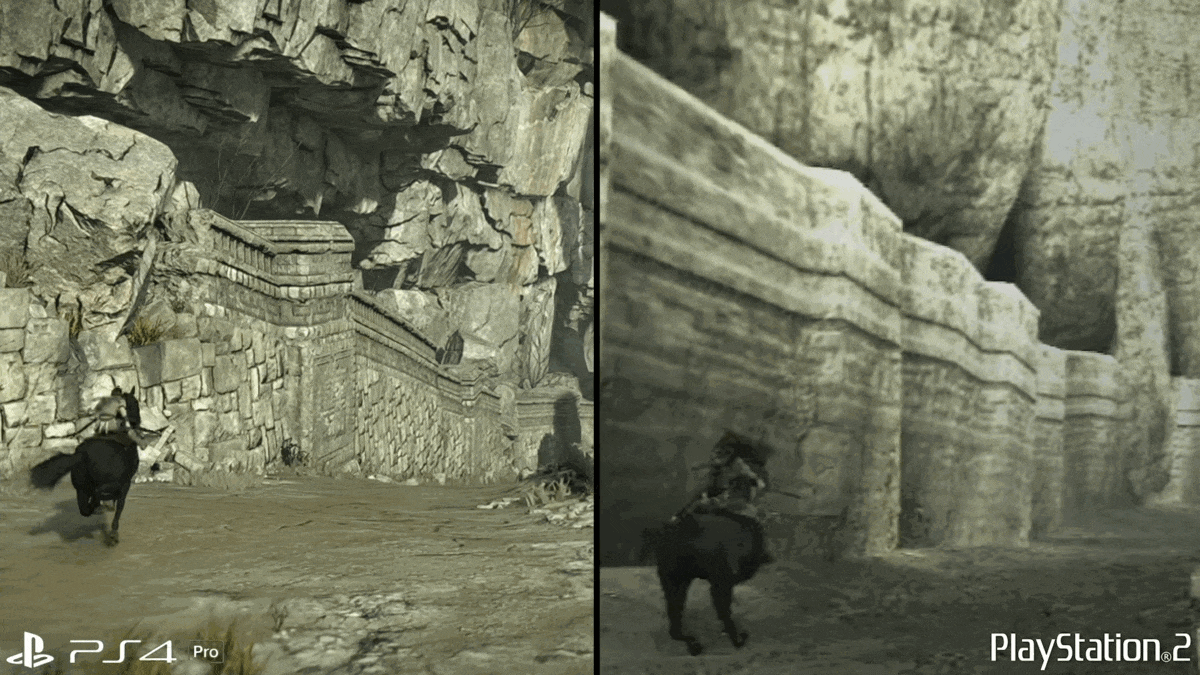
Bluepoint also brought performance improvements to the game. They broke up the world into manageable portions, rendering distant areas at lower levels of detail, and made countless optimisations to game assets so that they could offer a 60-frames-per-second (FPS) performance mode, and a locked 30-FPS quality mode at 4k HDR on the PS4 Pro. They also fixed the awkward controls and camera movement of the original, so that the game is playable no matter what frame rate you choose. However, they decided to keep the original control mapping as an option for older fans. With its devout attention to detail and its commitment to reviving SOTC for a new generation, this remake does count as one of the best ever, and is a standard for other developers to reach for.
Capcom also did an excellent job with the Resident Evil 2 remake, though the title is significantly different from the original, which was not a true 3D game and was released for Sony’s first PlayStation, well before full-3D games were pioneered by id Software and Epic Games. Nevertheless, Capcom faithfully retained the original’s atmosphere – ‘jump-scare’ locations are recreated faithfully in the remake, and even some of the in-game objects are placed exactly where they were in the original. However, some character roles are expanded and certain areas are reworked from scratch. 2019’s Resident Evil 2 is not a shot-for-shot recreation, but a reimagined version that remains true to the spirit of the original.
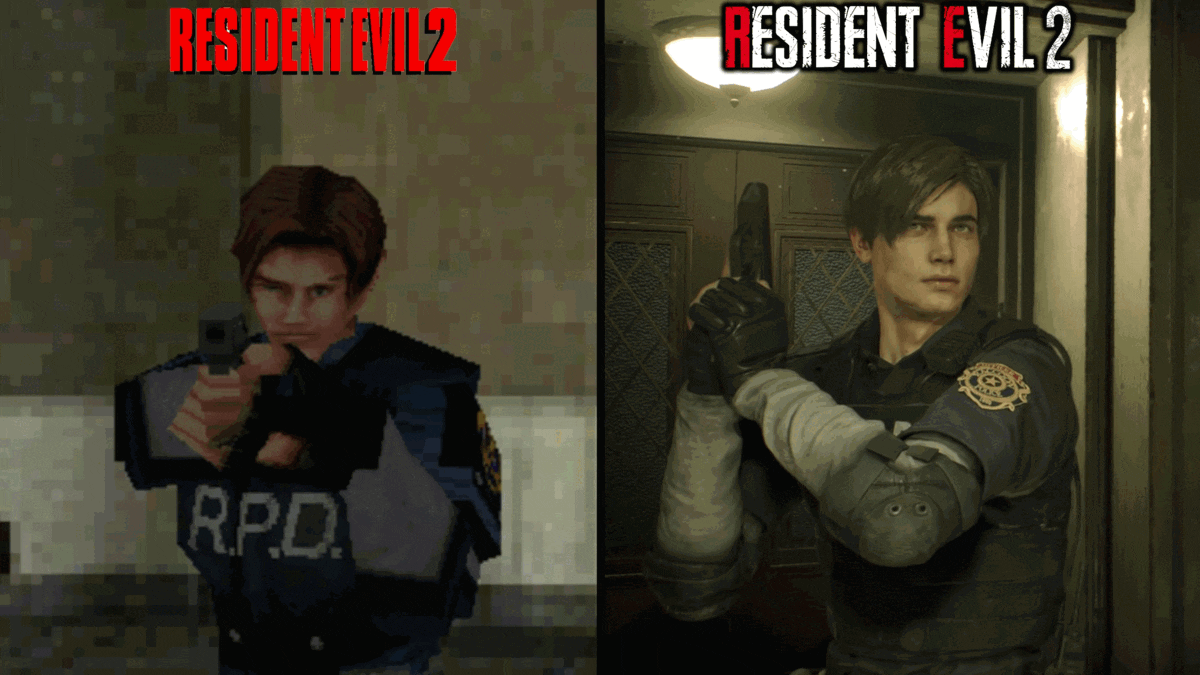
Capcom nevertheless fumbled the Resident Evil 3 remake, cutting out content, iconic locations and scripting the behaviour of the enemy, Nemesis, taking away the element of surprise that made him so terrifying in the original.
A remake works if it remains faithful to the original while reimagining it at the same time. Not even the best graphical upgrades can assure success if the game veers too far away from the original. Introducing new elements while staying true to the source is a tough balancing act, and remakes of games such as Resident Evil 2, Shadow of the Colossus and Final Fantasy VII pull this off, while others fail to live up to expectations. Considering that the Final Fantasy VII remake cost $140 million – more than what it takes to make and market a major movie – developers must tread carefully when remaking old games for contemporary audiences. However, despite the manifest challenges involved, studios continue to pursue the remake trend – upcoming remakes include Resident Evil 4 (2005), Dead Space (2008), Silent Hill 2 (2001), Tom Clancy’s Splinter Cell (2002), and Prince of Persia: The Sands of Time (2003).
The Video Game Remaster – Old Games Get a New Look
A video game remaster is a lesser undertaking than a remake – it uses largely the same game code but greatly enhances the visuals by adding various graphical effects, and increasing resolution and performance by taking advantage of modern hardware. Many remasters are bundled into a single collection, giving users good value for their money.
Remastering is an ideal choice for famous games released a generation or two ago Generally the time frame between a remaster and the original is shorter, especially when contrasted to a remake. Bioshock: The Collection (2016) – a compilation of remastered Bioshock games, was released about three years after the last Bioshock title, Bioshock Infinite. Borderlands: The Handsome Collection (2015) which contains Borderlands II and Borderlands: The Pre-Sequel, was released a year after the latter title.
Sony has used remasters to fill out its catalogue since the PS3 generation. A Wikipedia page lists nearly 60 remasters for the PS3, many of which are bundles containing multiple remastered games. These games look much better than their PS2 or PS1 counterparts because the PS3 is one of the first HD consoles, and the original games remastered from SD (standard definition) look much sharper, with higher-quality texture detail and better character models. There are nearly 60 remaster titles (some of which bundle multiple games) for the PS4 as well, but many of these remasters are available on other consoles and PC too. Sony’s remasters are either branded as ‘Classics HD’ or come with labels like ‘Remastered in High Definition’.
Remastered games come with a slew of visual upgrades. Assassin’s Creed 3 Remastered (2019) includes volumetric lighting (or ‘god-rays’), screen-space reflections (by which water bodies and other glass-like surfaces reflect nearby objects in the scene), improved shadow detail, realistic lighting from in-game light sources and increased view distance. The remaster also uses physically-based rendering along with upgraded textures and remade character models to make the game look photorealistic and supports 4K HDR rendering on PC, PS4 Pro, Xbox One X, and the current console generation.
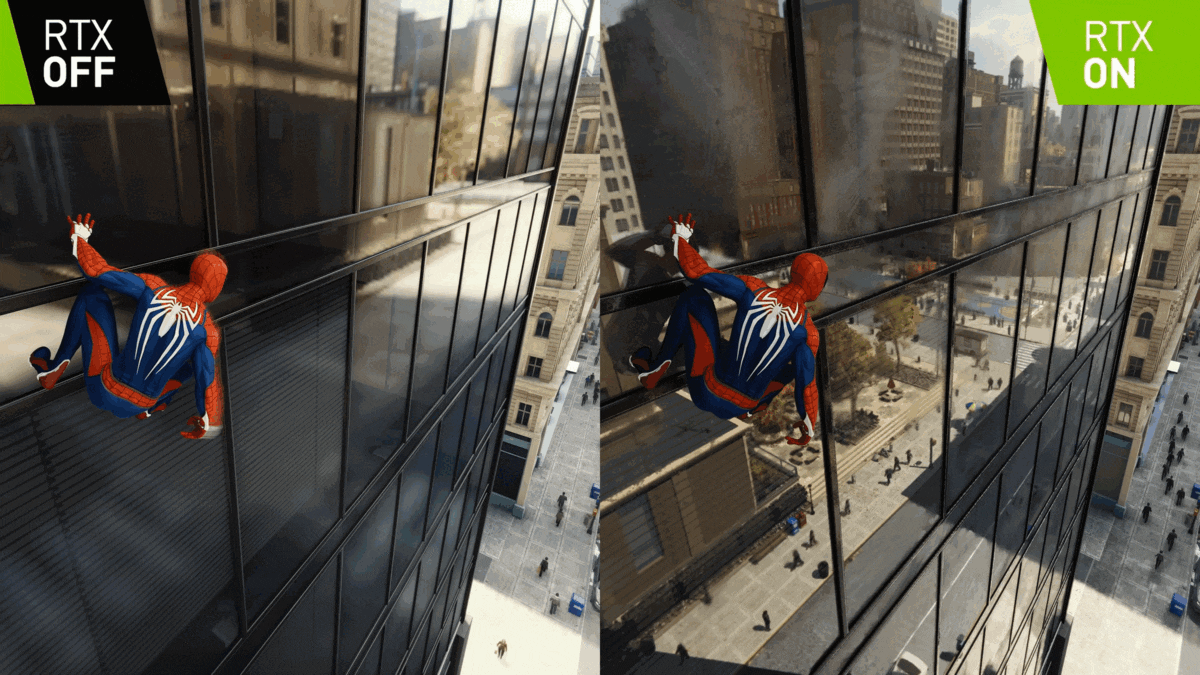
One of the better remaster editions available today is Halo: The Master Chief Collection, both in terms of the visual upgrades it brings to its games, and the sheer number of games included – six remastered games, with each title’s multiplayer receiving regular updates. When released in 2014 for the Xbox One, the MCC won IGN’s People’s Choice Award as the best remaster of the year, and the collection has only gotten better since. MCC was first released for PC in 2019, (though only Halo: Reach was included), but within a year, all games in the collection were ported to PC.
The visual upgrades are of such a quality that one can end up considering these remasters as remakes. Digital Foundry’s Youtube review of Halo 2: Anniversary, which is part of the MCC, straight up calls the game a remake. Halo 2 has gorgeous pre-rendered cinematics that replace the original’s engine-based cutscenes, and uses real-time lighting and shadows, along with global illumination, to add realistic lights and shadows to both in-game objects and particle effects (such as explosions). Not all games in the collection were as comprehensively remastered as Halo 2, but every game does come with performance enhancements and supports increased resolutions. The collection is not without its flaws, however, and the multiplayer experience can be buggy, especially in the PC versions of Halo 2 and Halo 3.
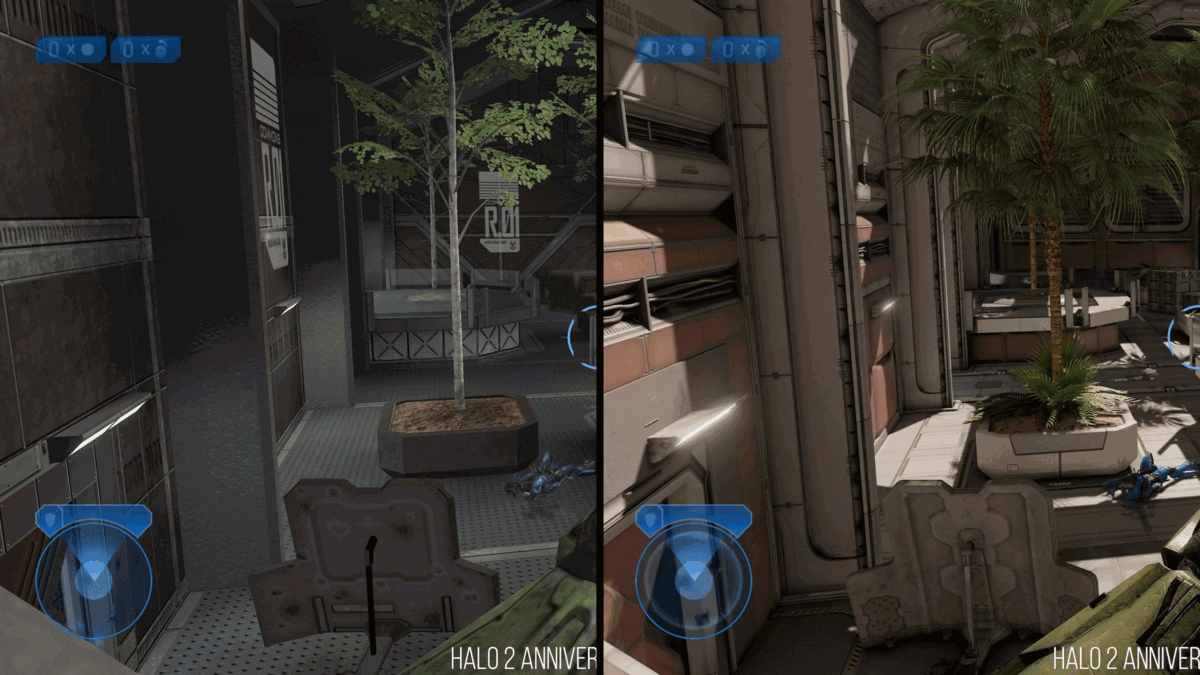
Remasters generally improve upon the original and become the ideal way to experience an older game, unless the game has been remade – Fumito Ueda had endorsed the PS3 remaster of Shadow of the Colossus as the definitive edition of the game before the remake was released. But even prominent companies like Blizzard and Rockstar Games can botch remasters so thoroughly that they become the target for relentless backlash from gamers.
Grand Theft Auto: The Trilogy – Definitive Edition (2021), which bundles ground-breaking classics such as GTA III (2001), GTA: Vice City (2002) and GTA: San Andreas (2004) is an example of what happens if a publisher remasters games without taking care to respect player expectations. The release was buggy, the graphics lacklustre, character models still looked flat and unrealistic, and the Guardian’s critic calls the remaster an ‘infuriating disappointment’. Gamesindustry.biz published an opinion piece arguing that companies shouldn’t release remasters just to make a fast buck but must cherish the creative history of the games they upgrade, and excoriated Rockstar for removing the original versions of these games from digital download stores when it released the remastered collection. The debacle forced Rockstar to apologise, even though they had not developed the remaster in-house – Grove Street Games, the studio behind the remaster, is fixing its various issues.
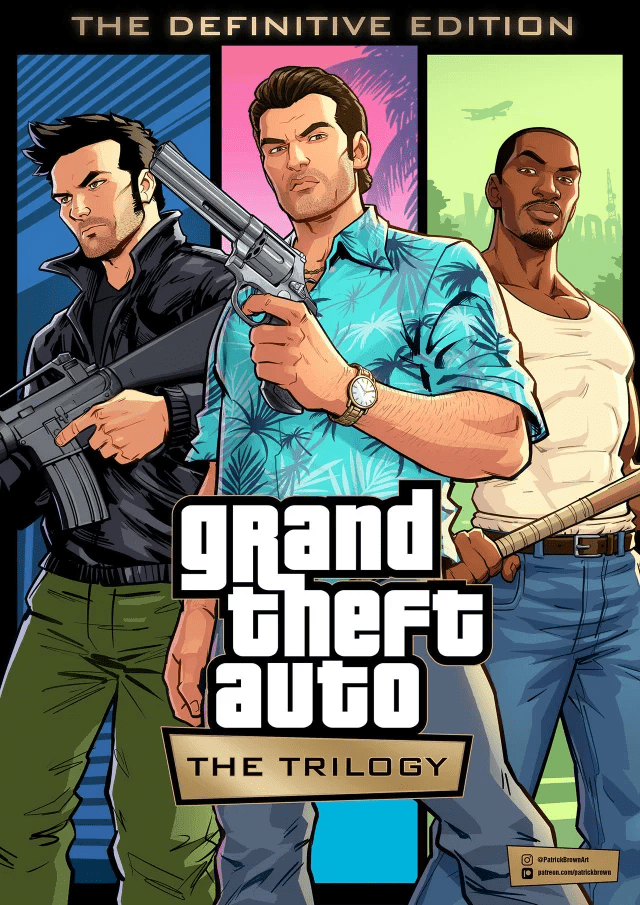
Another infamous example is Warcraft III Reforged (2020), which is a remaster of the original Warcraft III: Reign of Chaos (2002). It received an overwhelmingly negative reception and even led to the creation of a website that successfully petitioned for a refund to all those who bought the remaster by listing all the upgrades that Blizzard had promised, but not delivered.

Remasters will likely succeed if developers stick to what is now a well-worn path – offering good value for money by improving the visuals and performance of the game, and bundling either its DLC, or multiple games, into one easily accessible package.
As discussed above, remasters are inherently less risky than new games or costly remakes, and their target audience can be clearly identified. This is perhaps the reason why a badly-made remaster draws such backlash – it fails to live up to quite modest expectations.
The Next-Gen Upgrade – A Boost for Recent Games
Both remasters and remakes involve a good deal of effort, time and money, and must satisfy gamers familiar with the original and others looking to discover a classic.
A next-gen upgrade doesn’t have to completely overhaul a game, and usually upgrades a game’s performance and visuals to a certain level – it can unlock 60-FPS modes on a title that was locked at 30 FPS in an earlier console generation, and can also use current-gen hardware to display a game at native or upscaled 4k resolutions.
Some developers go the extra mile and provide higher-res textures, and offer support for ray-tracing and upscaling algorithms, and utterly transform their game’s look as a result – ray-tracing is an advanced graphics technology that results in near-perfect lighting, shadows and reflections, but it can also severely affect performance. It thus goes hand-in-hand with upscaling algorithms, which allow the game engine to render ray-traced scenes at much lower resolutions before upscaling the result.
Capcom’s Resident Evil 2, Resident Evil 3 and Resident Evil 7: Bio-Hazard all have free next gen-upgrades, which feature ray-tracing. id Software’s Doom Eternal (2020) got a ray-tracing patch for both PC and current-gen consoles, as did HellBlade: Senua’s Sacrifice (2017) – both games are also available on the Xbox and PC Game Pass.

Next-gen upgrades make sense for recent games. By default, such games use modern rendering paradigms, such as physically-based rendering and HDR, and are built from scratch with the sort of graphics features that are introduced to an older game when it is remastered or remade. A cross-gen title, which is released late in the life-cycle of an older console generation and ‘straddles’ the boundary between older and current-gen consoles, is also an obvious candidate for a next-gen patch.
Recent games and cross-gen titles may have run at lower resolutions and frame rates due to the limitations of console hardware when they were released, and the next-gen patch is meant to fix this and make the game run better on newer consoles. Adding support for ray-tracing and upscaling algorithms is a bonus – developers may be focussing on delivering such features for true next-gen games released exclusively for the PS5 or the XBox Series X|S, rather than upgrading older games with such tech.
Given that a next-gen upgrade can be quite trivial compared to a remaster or a remake, one would expect an industry-wide standard for delivering them. This is far from the case. If you want a remake or a remaster, all you need to do is go to a shop or a digital storefront and buy it. But the upgrade path to a next-gen version of your game is absurdly convoluted today.
Some developers participate in Xbox’s Smart Delivery program, which automatically downloads the game version best suited to your console regardless of what disc or digital edition you buy. Microsoft has promised Smart Delivery support for all first-party games, but third-party publishers aren’t obliged to participate. Ubisoft supports Smart Delivery for Assassin’s Creed: Valhalla (2020) and CD Projekt Red does the same for Cyberpunk 2077 (2020). However, EA came up with a ‘dual entitlement’ scheme where owners of Madden NFL 21 (2020) could claim a free next-gen upgrade for the Xbox Series X|S or PS5 before Madden NFL 22 was released, which makes little sense – why should one game’s next-gen upgrade be blocked after the franchise gets a new release?
Sony, meanwhile, seems to lack a coherent strategy for delivering upgrades, and does not feature any pro-consumer initiative meant to match up to Smart Delivery. Sony promised dual entitlement for a range of first-party cross-gen games for the PS5 – which meant that buying a cross-gen PS4 game would entitle you to a free PS5 upgrade – but did not include Horizon Forbidden West (2022) in this policy. After the ensuing backlash, the game’s PS4 version now has a free upgrade when bought for a PS5, but nevertheless, a costlier PS5 version exists. Consumers may well buy the PS5 version, not realising that the buying PS4 version will result in an identical download.
For cross-gen titles with dual entitlement, Sony simply leaves it up to the user to figure out the differences between the PS4 and PS5 versions of the game, and choose accordingly. An InputMag columnist calls the PS5 the ‘most confusing console on the market’, especially because it does not list the next-gen features of even its launch titles in the product description – you have to download these games (or watch Youtube videos of those who did) to find out the features available in quality and performance modes.
As mentioned above, Capcom released its Resident Evil next-gen upgrades for free, and CD Projekt Red did the same for Cyberpunk 2077, offering ray-tracing support on consoles with its next-gen patch. The company has also promised a next-gen upgrade for its seven-year-old open-world classic, The Witcher 3: The Wild Hunt (2015) – the patch is expected to arrive before the end of 2022.
In fact, Microsoft has told third-party developers that they should offer Xbox Series X|S upgrades for free, and should refrain from branding such upgrades as new DLC. If the developer still decides to create a paid upgrade path, Microsoft recommends that owners of a last-gen version be offered a discount when they pay for the Xbox Series X|S version. Of course, no third-party studio or publisher is obliged to heed Microsoft’s suggestions, resulting in controversial releases such as Control Ultimate Edition.
505 Games’ policy regarding Control’s next-gen upgrade has been particularly egregious. Released in 2019, Control was one of the first games to implement advanced ray-tracing effects on the PC, and is one of the games NVIDIA uses to showcase the capabilities of its RTX cards. Console players, however, could not enjoy these features because the Xbox Series X|S and the PS5 were yet to be released.
When the publisher did offer a next-gen console upgrade, they locked it behind a $40 ‘Ultimate Edition’, which had no new content when compared to the Digital Deluxe Edition many users had bought earlier, expecting a free next-gen upgrade for the extra money they had paid. In fact, the only upgrade path for the next-gen patch on console is to buy the Ultimate Edition, even if you have bought the base game and all the DLC earlier, and fans of the game are justifiably angry.
Despite being simpler than a remaster or a remake, a next-gen patch is a far more convoluted upgrade path and can lead to considerable confusion and frustration. While developers strive to create beautiful and faithful remakes and remasters of older classics, there appears to be no industry-wide commitment to deliver the relatively simpler enhancements of a next-gen patch. Is this because gamers now expect these upgrades for free?
Conclusion
Remakes and remasters succeed or fail based on how well they uplift a game while remaining true to the source material, especially as nostalgia is a significant factor in determining such games’ sales. In the future, however, we may not see such remakes or remasters because of the prominence of live-service games, which aim to always keep pace with the 11latest graphics standards as part of their intent to keep gamers engaged for years.
Also, the primacy and profitability of mobile games may make remakes and remasters less important in the future because the factors driving their creation may no longer be relevant. Shadow of the Colossus has arguably awed multiple generations of gamers, but will a mobile game like Angry Birds ever hold the same place in gamers’ hearts, especially to justify a remaster?
Ray-tracing transforms the look of present-day games that implement it, and we may soon reach a point where there isn’t much of a difference between console generations, especially as consoles these days feature much the same architecture as PCs, while being optimised for gaming. This would imply that the ‘next-gen upgrade’ will suffice to update a game to a new console generation or a new line of PC hardware.
Given how utterly confusing upgrade paths are today, publishers, developers and console manufacturers – especially Sony and Microsoft – may soon have to collaborate on establishing a standard by which each console automatically provides access to the most suitable version of any title that a gamer buys. Microsoft has already laid the groundwork with Smart Delivery, but such an initiative can work only if everyone agrees to implement it. Gamers will continue to be short-changed, especially when it comes to next-gen patches, until an industry-wide policy is established for such upgrades.
Gameopedia offers custom solutions depending on your specific data requirements. Reach out to us for actionable insights on the remake-and-remaster trend in the gaming industry.

